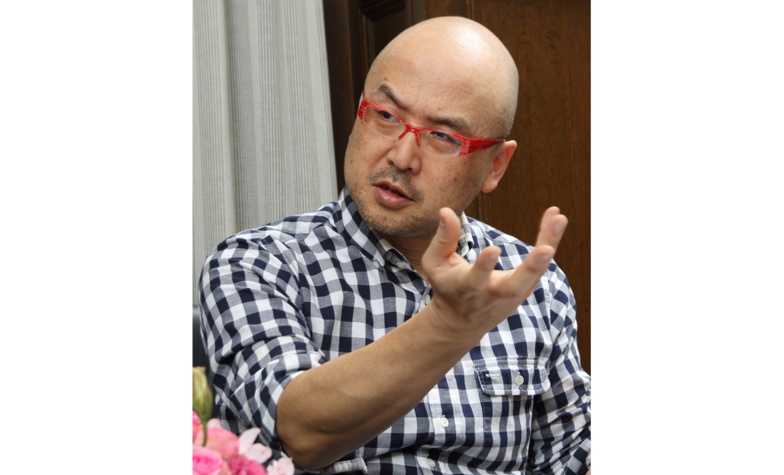
(Affiliations as of the time of publication in "Ad Studies")
The Core of Communities is Problem Solving
Kobayashi: The emphasis on the real world isn't just because the internet became convenient. It might also be because technology's imperfections became apparent. Take restaurant recommendations, for example—they're incredibly flawed. There are tons of places that are genuinely delicious but get low ratings. It's like book reviews where someone who hasn't read much says, "I couldn't understand this book at all. It's boring." You'd trust a friend who reads a lot much more. People are getting tired of that and turning back to the real world.
Sato: I totally get that. If you search "where to drink in Ginza," you get like 5 million hits. It's impossible to sift through that—it's actually more inconvenient. It's faster to just ask Kobayashi, "Where have you been going in Ginza lately?" Even if the place he recommends turns out to be a dud, you can share the frustration: "Kobayashi! What was up with that place?!" That kind of shared experience is valuable in its own way (laughs).
Kobayashi: Understanding the superficiality and inconvenience of the internet, web-based companies are now starting to hold hackathons and ideathons (*Note) in person. It's not about jumping on a trend; you need the resolve to build a community. Without that, it's fragile.
Sato: Yeah, incredibly fragile. Online-only is practically equivalent to having no connection at all. Companies that don't grasp this still mistakenly believe gathering people online will somehow create something new, and they're still failing.
Kobayashi: Sato Nao, what kind of community do you think companies should run?
Sato: Strong communities are those focused on solving problems. The book "Grasswell: Corporate Strategy Through Social Technology" (by Sharleen Lee and Josh Bernoff, translated by Namiko Ito, published by Shoeisha) briefly mentioned something crucial: you can't build a community around a product. Most client companies say, "Let's build a community around this product," but people don't usually empathize with the product itself. Products exist to solve problems people face in their lives. So, if you want to build a community, you absolutely must center it around solving those problems. In that sense, P&G's "BeingGirl" is an interesting example. While the product is menstrual care, the core of the community revolves around the challenge of "becoming a girl." I think it's problematic if the problem-setting feels forced, but you have to start thinking from that point.

BeingGirl is a teen-focused website launched in the US in 2001 by P&G, the company behind the sanitary products. Its rich content addressing the unique worries and interests of adolescence is hugely popular. It has now launched in about 30 countries worldwide.
Kobayashi: Companies making products for women are really good at this. Triumph has a long-running project where people collaborate to design bras. It's grown into such a strong community they now hold fashion shows, with users even modeling. MUJI is also really good at this.
Sato: I suspect the initial idea wasn't about gathering people and fostering empathy. Historically, acquiring new customers was the core of marketing. But with a community-based approach, the focus shifts to existing customers. In other words, the community already exists, and empathy is already present. What companies can do is support and energize it. Trying to build a community or create empathy from scratch, like an advertising agency might, usually fails.

Kobayashi: This was quite some time ago, but Mazda opened its Yokohama factory to users and held events on Sundays. The main audience was fathers. Engineers held an open Q&A session where the fathers asked questions. I listened nearby, and the fathers, eyes sparkling, asked questions about hydrogen rotary engines that rivaled experts—they looked thrilled. Of course, families were welcome too, with light refreshments and a play area for kids. Unlike typical test drives, everyone there was already a Mazda owner. I felt this had incredibly high engagement.
Sato: I'll share one example too. Nescafé Ambassadors. I once attended a user camp they organized, and what struck me was how the Nestlé staff said, "This is our hobby." They genuinely enjoy it. When I heard there'd be a special live performance, I thought maybe everyone would put on a homemade show. But who came on stage? Tatsuya Ishii from Kome Kome Club. With only about 100 participants at the camp, that's unheard of. They genuinely love spending time with users, and that passion came through. I think that's what energizes a community.
Kobayashi: They really pulled off that live show. A typical company would be asking, "Are we spending 10 million yen on 100 people?" or "How much will that sell?" Did Nestlé know that community value can't be measured by ROI?
Sato: Exactly. If they'd thought about measuring advertising effectiveness based on past exposure, they wouldn't have done it.
Kobayashi: Companies often consult me saying, "We want to do owned media." But focusing solely on short-term advertising results isn't the right approach. Of course, the ultimate goal should be sales, and thinking that way is natural. However, media requires the work of sincerely delivering necessary information to readers. Repeating this builds trust with the audience, and profits follow later. Owned media isn't suited for companies that can't form bonds with users in the first place.
What's needed is moderation capability
──If we're moving from the era of communication to the era of community, will the skills required of marketers also change?
Sato: First, we mustn't forget that many people in the world don't use the internet. As of 2014, there were 75 million people in Japan (PC-based) who didn't use internet services. Even among those who do use the internet, some only use LINE and social games. Factoring that in, the number of people who actually use the internet properly is probably around 30 to 40 million. When you talk in Minato Ward or Chuo Ward, it feels like everyone uses the internet, but that's absolutely not the case. In fact, the majority don't use it.
Kobayashi: It's not just a generational issue. Quite a few young people aren't proficient either. I teach at a university, and when I assign tasks to students, they ask things like, "Where can I find that information online?" They're supposed to be internet users, yet they can't even use search engines properly. Just because someone calls themselves an internet user doesn't mean they can actually use the internet effectively.
Sato: The crucial point is that the 70 to 80 million people not using the internet still have material desires, and exposure through TV and newspapers still works on them. We need to think about them separately. Right now, there's this trend of trying to make TV commercials that also appeal to netizens. Like trying to create something on TV that might go viral on SNS. That's pointless. People who only watch TV don't use SNS, and people who use SNS like it's second nature don't resonate with information broadcast on TV. So mixing them is a waste. For people not using the internet, I think more primitive mass communication is fine.
Kobayashi: On the other hand, for people who use the internet, you're suggesting a community-based approach to build empathy.
Sato: Yes. But when I say an empathy approach to communities, I don't mean trying to corral people. It's more about us joining existing communities. Some call it community design, but "design" implies a top-down approach, which isn't quite right. If I had to say, it's more about moderation. Marketers need to hone the literacy required to become community moderators.
Kobayashi: Related to that, I want marketers to become accelerators. In the startup world, an accelerator is someone who connects companies and entrepreneurs to support launching joint projects. Accelerators see the big picture, assign the right people at the right time, and shape the business within a set period. Isn't this exactly the kind of activity marketers need when thinking about communities?
To become an excellent accelerator, it's crucial for the individual to have a realistic grasp of the community. Conversely, many marketers I see lack this realism—they don't truly understand how the community will react to certain posts on social media or how it will behave. Building a community isn't glamorous; it's actually quite tough work. But as long as you avoid that, you won't achieve anything.
Sato: Exactly. Communities are incredibly inefficient. That's why they're not really suited for advertising people who are used to efficiently using megaphones for mass communication. It comes down to whether you can step into that space.
Kobayashi: Satonao, how has your experience been actually running a community?
Sato: I founded a company called 4th (Force) as a fourth community, following family, friends, and workmates. It started with my lab. People gathered at the lab would eventually return to their respective places, but I felt it was a waste for everyone to scatter. So, I created a physical space where everyone could gather. We hold lab-style seminars once or twice a week, or gatherings where we drink wine or sake.
Honestly, it's trial and error. Things I thought would make everyone happy sometimes ended up being too much and backfired. There are still parts I don't fully understand myself, so first comes practice. I think things will become clearer as we keep doing it.
Kobayashi: What lies beyond that? Business?
Sato: No, if you try to monetize the community, everyone will see right through it. Of course, we need enough income to survive, but breaking even is fine. What's more important is whether the community can function as a core unit and respond effectively when another major disaster strikes and we need to take action.
Remember the Paris attacks? I doubt mass communication could stop World War III. Could art stop it? That's also tough. Singing "Imagine" didn't stop Bush's war. So what can we do? I think the only way is to start small, within our tribe, and spread the message, creating a chain reaction. That might sound grandiose, but that's what I want to focus on doing properly over the next ten years or so.
Kobayashi: A community formed by connected tribes might just hold that kind of potential. Thank you very much for today.
*Note: Hackathon is a portmanteau of "hack" and "marathon." Originally, it referred to a collaborative event where IT professionals gather to intensively develop solutions in teams around a specific theme. Ideathon, similarly, combines "idea" and "marathon." Recently, it's been used for a broader range of genres, like new business development, for similar workshop-style events.











